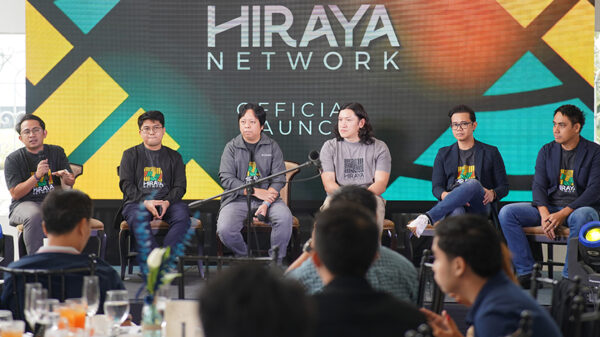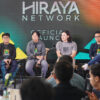Public Interest Registry, the nonprofit operator of the .org domain, and Nonprofit Tech for Good released the results of the “2018 Global NGO Technology Report.” The third annual report analyzes how non-governmental organizations (NGOs) worldwide use web, email and mobile technology, online fundraising tools and social media, as well as manage data and security.
The report details the key findings from a survey of 5,352 NGO respondents from 164 countries across Africa, Asia, Australia & Oceania, Europe, North America and South America. The report provides insight on the online and mobile communication tools NGOs around the world use to promote general awareness, communicate with core audiences and raise funds from donors, as well as an analysis of those online tools and comparisons of regional usage. New findings this year also uncover how NGOs implement data management and security software.
Key findings globally include:
- 92 percent of respondents have a website. Of those, 87 percent are mobile-compatible, a 9 percent increase from 2017
- 68 percent of survey respondents noted that their organisation uses the .org domain, compared to 8 percent that use the .com domain
- Email dominates as the preferred form of communication to donors, with 63 percent of respondents regularly sending email updates, but 18 percent use messaging apps and 15 percent regularly send text messages to supporters
- 72 percent of respondents accept online donations, an increase of 5 percent from 2017
- While 95 percent agree that social media is effective for online brand awareness, only 32 percent of NGOs worldwide have a written social media strategy
- Facebook leads global use as the highest social media platform with 93 percent of respondents having a dedicated page, followed by Twitter (77 percent) and YouTube (57 percent)
- 25 percent of NGOs post daily to their Facebook page and 24 percent Tweet two-to-five times daily, yet 68 percent of NGOs post to LinkedIn less than once per week
- 80 percent of NGOs worldwide rely on Microsoft Windows operating system for desktop/laptop computers; on smartphones/tablets global Google Android use outweighs Apple iOS
- NGO respondents indicated using Customer Relationship Manager (CRM) software to manage communications with donors (45 percent), and of those, 64 percent use cloud-based CRM
- Only 41 percent of global respondents use encryption technology to protect data and communications
“The findings from the 2018 report confirm that NGOs worldwide are rapidly expanding their use of technology and with increased reliance on technology, comes increased data management and security needs,” said Heather Mansfield, founder of Nonprofit Tech for Good. “For the first time, this year’s report provides benchmarks for managing and securing organizational and donor data. NGOs lag behind the private sector in this area and by providing benchmarks, we hope to inspire NGOs to modernize their data management and security practices.”
Key findings from Africa include:
- Only 74 percent of NGOs in Africa have a website, with 87 percent being mobile compatible
- Compared to the global average, fewer NGOs in Africa accept donations online (55 percent)
- WhatsApp is the most popular messaging app to communicate with donors (87 percent), followed by Facebook Messenger (52 percent) and Viber (4 percent)
- Facebook is the most popular social media channel (85 percent), followed Twitter (62 percent) and LinkedIn (39 percent)
- Google Android is the most popular smartphone/tablet operating system (66 percent)
Key findings from Asia include:
- Compared to the global average, fewer respondents in Asia have a website (81 percent). Of those, 86 percent are mobile compatible
- 56 percent of respondents accept online donations, an increase of 9 percent from 2017
- WhatsApp is the most popular messaging app to communicate with donors (69 percent), followed by Facebook Messenger (52 percent) and Viber (9 percent)
- 86 percent of respondents in Asia have a Facebook page and 62 percent have a Twitter profile
- In Asia, 62 percent of NGOs rely on Google Android as their smartphone/tablet operating system
Key findings from Australia & Oceania include:
- 99 percent of NGOs in Australia and Oceania have a website with 86 percent being mobile compatible
- 70 percent of NGOs accept online donations
- Representing the lowest percentage globally, only 8 percent of NGOs use messaging apps to communicate with donors; 88 percent of those organisations use Facebook Messenger
- Facebook is the most popular social media channel (94 percent), followed by Twitter (73 percent) and LinkedIn (57 percent)
- In the region, Apple iOS is the preferred smartphone/tablet operating system with 45 percent, while 21 percent use Google Android
Key findings from Europe include:
- 97 percent of European NGOs have a website with 86 percent being mobile compatible
- The percent of European NGOs that accept online donations is 59 percent
- When communicating with supporters, only 17 percent of respondents in Europe use messaging apps, with WhatsApp being the most popular (65 percent)
- 94 percent of respondents in Europe have a Facebook page, 80 percent have a Twitter profile and 58 percent have a LinkedIn page
- Google Android is the smartphone/tablet operating system of choice (47 percent) followed by Apple iOS (25 percent)
Key findings from North America include:
- 98 percent of NGOs in North America have a website. Of those, 88 percent are mobile compatible
- 86 percent of respondents accept online donations
- Only 10 percent of NGOs use messaging apps to communicate with donors. Of those, Facebook Messenger is the platform of choice (68 percent), followed by WhatsApp (32 percent) and Snapchat (10 percent)
- 97 percent of NGOs use Facebook, 85 percent use Twitter, 63 percent use LinkedIn and 61 percent use Instagram
- Of NGO respondents in North America, 49 percent indicated using Apple iOS on smartphone/tablets, which is the highest reported percentage of use among all regions
Key findings from South America include:
- Compared to the global average, fewer South American NGOs have a website (88 percent) with 87 percent being mobile compatible
- At 56 percent, the volume of NGOs that accept online donations is also lower than the global average (72 percent)
- South America respondents reported the highest use of messaging apps to communicate with donors (40 percent), with most using WhatsApp (90 percent)
- Among all countries, South American has the highest use of Facebook (98 percent) and the lowest use of LinkedIn (41 percent); 71 percent of NGOs use Twitter, followed by Instagram at 55 percent
- 78 percent of NGOs use Google Android as their smartphone/tablet operating system
“The annual Global NGO Technology Report not only shows how the internet can help organisations communicate and collaborate with stakeholders, but how it can serve as a powerful force for change when coupled with various technology tools,” said Brian Cute, CEO of Public Interest Registry. “This is an important research initiative, bringing together partners from various industries to ultimately support organisations around the world as they seek to better understand and take advantage of technology that can help them actualizing their important social missions.”









































































































